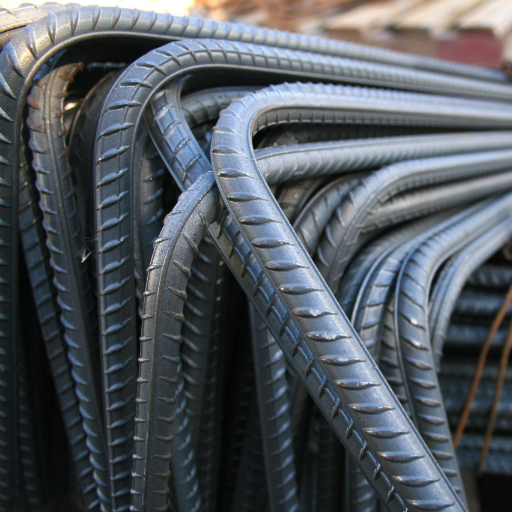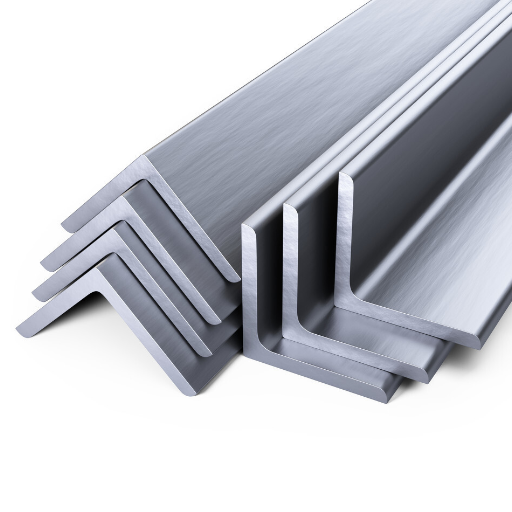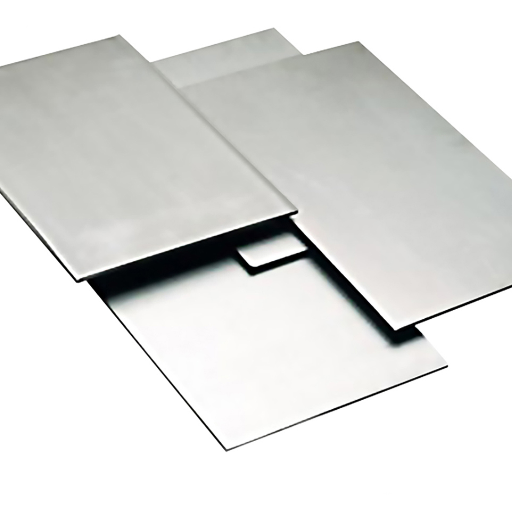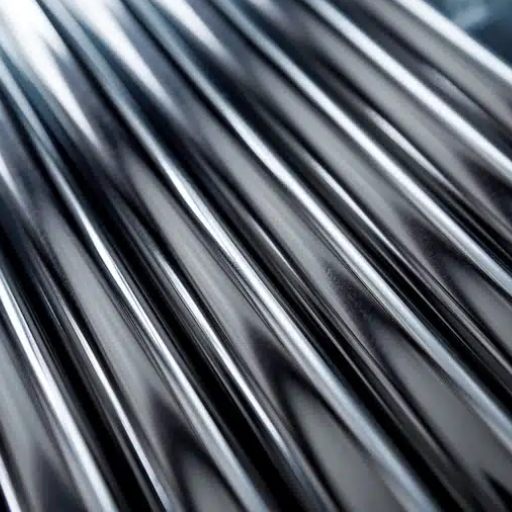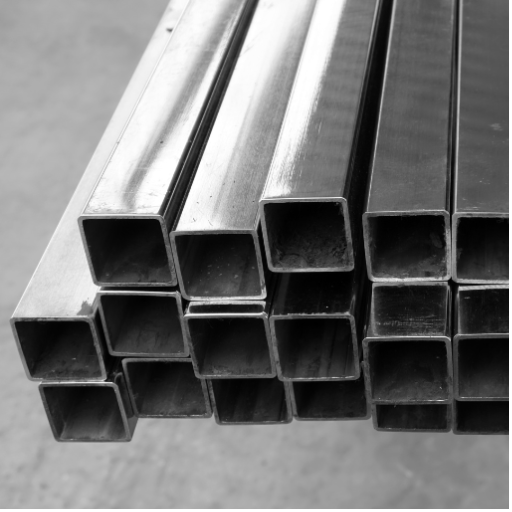Being stainless steel is known for the incredible physical strength it endows, making it resistant to corrosion and remain versatile across a multiple-use array of industries. But it often appears as an odd question asked for: is stainless steel magnetic? The answer is uncertain, as the magnetic nature depends on its particular grade and metallurgical constitution. This blog aims to explain the science behind why some grades of stainless steel are magnetic while others are not. By being acquainted with factors governing magnetism, such as structure and alloying elements, you can hone your knowledge to understand which material is best for the job. From manufacturing professionals to casual onlookers who are curious about stainless steel properties, this comprehensive guide is bound to shed light on this matter.
Introduction to Stainless Steel and Magnetism
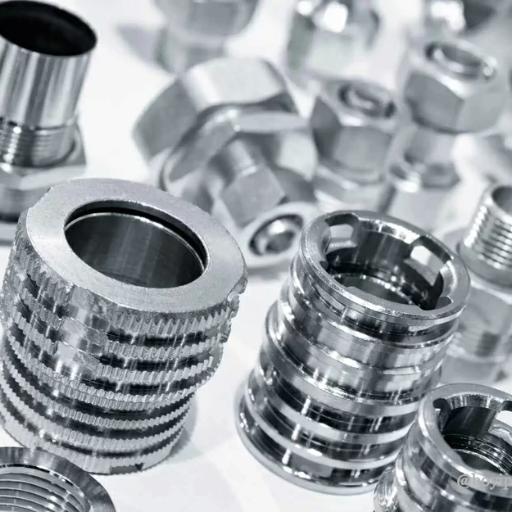
The magnetic property in stainless steel is predominantly influenced and informed by its crystal structure. The general structures found in stainless steel are austenitic and ferritic. Since it has mostly nickel in it, the bodies in austenitic stainless steel, say Grade 304 or 316, will mostly be non-magnetic because of their FCC structure that does not allow for magnetic alignment. Ferritic stainless steels, like Grade 430, away from their lovely names, are, however, magnetic because of their BCC structure that aligns magnetic domains. Moreover, the presence of alloying elements can affect magnetism, for the higher the nickel content, the greater the stabilization of the austenitic structure; the better maintained this structure, the poorer the magnetic property arising from it. Recognition of these differences finds utter importance while choosing between stainless steels in situations wherein magnetism could come into play.
Defining Stainless Steel and Its Alloys
Stainless steels are a series of alloys based on iron, known somewhat exotically for their natural corrosion resistance, mechanical strength, and ability to withstand extreme atmospheric conditions. This resistance develops mainly through the presence of chromium, usually starting with a minimum weight of 10.5%. Put simply, chromium technologies form a passive oxide layer on the surface of the steel, thereby greatly retarding any oxidation or rusting.
The importance of secondary alloying elements lies in stainless steel versatility; for instance, nickel, molybdenum, and manganese are brought to contribute other properties. For example, nickel makes the alloy tough and ductile while providing corrosion resistance against acids. Molybdenum assists the alloy against pitting and crevice corrosion, and manganese enters into the deoxidization during alloy manufacture.
Generally speaking, stainless steel is basically classified under five major names according to microstructure and corresponding properties: austenitic, martensitic, duplex, and precipitation-hardening stainless steels. The classifiable properties are quite different from each other. For instance, austenitic stainless steels are the most commonly used group of non-magnetic and highly formable steels, and, thus, are used in applied fields such as food processing equipment and chemical tanks. On the other hand, duplex stainless steels are considered high in strength and corrosion resistance and are thus applicable to the marine and chemical industries.
Overview of Magnetic Properties in Metals
Magnetic properties in metals depend upon the electronic structure relating to electrons in their atomic orbitals. Ferromagnetic metals such as Fe, Ni, and Co strongly exhibit magnetic property by aligning their unpaired electrons all in the same direction, thus producing a strong net magnetic moment. Such metals find their significance in electric motors, transformers, and magnetic storage applications.
Paramagnetic materials like aluminum display a feeble response to magnetic stimulation. The unpaired electrons, in fact, line up along the external magnetic field under their influence, but the effect is quite temporary and ceases to exist once the external stimulating field is removed. On the other hand, diamagnetic metals, such as copper and silver, have paired electrons that provide below-par resistance to any magnetic stimulus.
Types of Stainless Steel
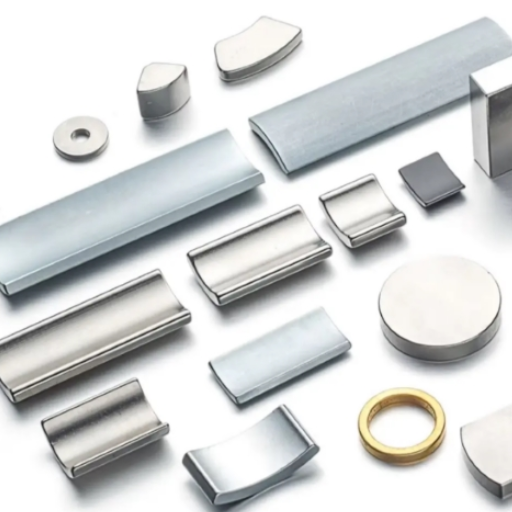
Stainless steel is classified into four main types according to microstructure and composition:
- Austenitic Stainless Steel
This type contains a high chromium and nickel content and has exceptional corrosion resistance and formability. It is non-magnetic and is used in kitchen equipment, chemical processing, and construction.
- Ferritic Stainless Steel
Ferritic stainless steel is magnetic with good corrosion resistance, given that it has ample chromium content and low carbon values. It finds applications mainly in motor vehicle components and industrial equipment.
- Martensitic Stainless Steel
High carbon content and great hardness and strength characterize this type. Magnetic and used widely for the making of tools, knives, and turbine blades.
- Duplex Stainless Steel
Overview of Different Stainless Steel Grades
|
Grade |
Key Points |
Corrosion Resistance |
Magnetic |
Typical Applications |
|---|---|---|---|---|
|
304 |
Versatile, easy to fabricate, affordable |
High |
No |
Kitchenware, tubing, building facades |
|
316 |
Contains molybdenum, resists chlorides |
Very high |
No |
Marine equipment, chemical containers |
|
430 |
Affordable, good for decorative purposes |
Moderate |
Yes |
Automotive trims, kitchen appliances |
|
410 |
High strength, wear-resistant |
Moderate |
Yes |
Cutlery, valve components, pumps |
|
2205 (Duplex) |
Combines strength and corrosion resistance |
Excellent |
Yes/Partial |
Oil, gas industries, coastal structures |
|
17-4 PH |
Precipitation hardened, high tensile strength |
High |
Yes/Partial |
Aerospace, nuclear equipment |
|
316L |
Low carbon, weld-friendly |
Very high |
No |
Medical devices, pharmaceutical industries |
|
904L |
Superior corrosion resistance, non-magnetic |
Exceptional |
No |
Acid processing, seawater systems |
Characteristics of 304 and 316 Stainless Steel
304 Stainless Steel:
- Composition:
- This stainless steel has 18%-20% chromium content along with 8%-10.5% nickel with low carbon content (<0.08%), thus ensuring good corrosion resistance.
- Corrosion Resistance:
- It resists corrosion well in various media such as fresh water, air, and mild chemicals but is not resistant to strong acids or media containing chlorides.
- Mechanical Properties:
- Tensile Strength (MPa): ~505
- Yield Strength (MPa): ~215
- Good formability and ductility.
- Weldability:
- Excellent with little danger of sensitization during welding.
- Applications:
- Used extensively in kitchen equipment, automotive trim, food processing tools on account of good durability and easy maintenance.
316 Stainless Steel:
- Composition:
- 16-18% chromium, 10-14% nickel, and 2-3% molybdenum.
- The molybdenum addition greatly enhances corrosion resistance.
- Corrosion Resistance:
- Resists comparably to pitting and crevice corrosion chloride-heavy environments in seawater or industrial salts.
- Mechanical Properties:
- Tensile Strength (MPa): ~515
- Yield Strength (MPa): ~240
- Ductility and formability comparable to 304 stainless steel but with durability imparted in extreme conditions.
- Weldability:
- Well weldable but may require post-weld annealing to improve resistance in extreme conditions.
- Applications:
- Typical usage in marine environments, chemical processing equipment, medical implants, and pharmaceutical production because of its application to adversely affected situations.
Comparison of Ferritic and Martensitic Steels
|
Property |
Ferritic Steels |
Martensitic Steels |
|---|---|---|
|
Crystal Structure |
Body-Centered Cubic (BCC) |
Body-Centered Cubic (BCC) |
|
Strength |
Moderate to high |
High to very high |
|
Hardness |
Lower hardness |
High hardness |
|
Corrosion Resistance |
Good, especially in non-chloride settings |
Moderate, requires protective coatings |
|
Toughness |
Good at room temperature |
Low, especially at low temperatures |
|
Weldability |
Higher due to lower carbon content |
Limited, preheating often required |
|
Heat Treatment |
Not hardenable by heat treatment |
Heat-treatable for enhanced properties |
|
Ductility |
Higher ductility |
Lower ductility |
|
Magnetism |
Magnetic |
Magnetic |
|
Operating Temperature |
Performs well at elevated temperatures |
Limited at high temperatures |
|
Applications |
Automotive, exhausts, kitchen appliances |
Knives, tools, turbine blades |
Why are Some Stainless Steels Magnetic?
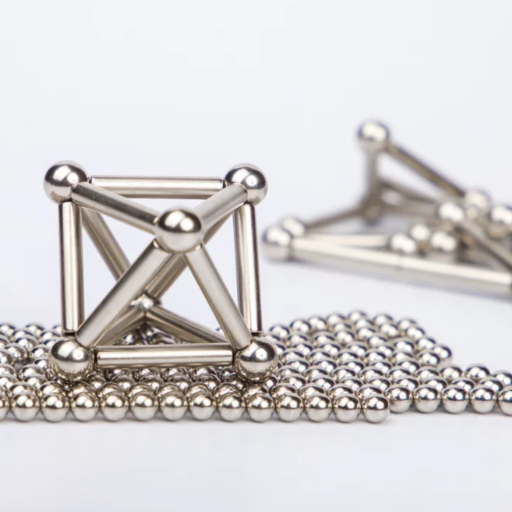
The martensitic or ferritic crystal structures are magnetic for stainless steel. These structures arise in stainless steels bearing a higher iron composition but a low concentration of nickel. For example, ferritic stainless steels are magnetic since the atomic arrangement of the crystal supports magnetism. On the other hand, austenitic stainless steels, with a higher presence of nickel, are non-magnetic for rare instances since their crystal structures actually interrupt magnetic alignment. Magnetic property thus depends upon alloy composition and its crystal structure.
The Role of Chromium in Magnetism
Chromium somewhat influences the magnetic properties of stainless steels chiefly by affecting the crystal structure and corrosion resistance of a material. When chromium is added to steel in an appropriate volume, a passive oxide layer is formed, enhancing corrosion resistance, which is an element of stainless steel. The effect of chromium on magnetism is much more subtle but quite important. Chromium stabilizes some crystal structures, like the body-centered cubic structure of ferritic steels, that manifest magnetic alignment. Conversely, in austenitic grades, chromium appears balanced with relatively increased quantities of nickel and manganese to stabilize the face-centered cubic (FCC) structure, which disturbs the evenly aligned magnetic domains, making the steel non-magnetic. The chromium concentration, the steel alloy composition, and the crystal structure are important for stainless steel grades so that they may be marketed for specific magnetic and non-magnetic applications. Effectively using this information will guarantee the materials perform optimally in varying functional needs in industries requiring high precision such as aerospace and medical devices.
Understanding Steel Grades and Their Magnetism
Nickel plays a very dominant role in affecting the magnetic property of stainless steel. It confers stability to an austenitic crystal structure when added to iron-chromium alloys, making it face-centered cubic (FCC) as opposed to body-centered cubic (BCC) or body-centered tetragonal (BCT) structures. Since it is FCC, austenitic stainless steels such as 304 and 316 are considered to be non-magnetic. However, cold working or mechanical deformation may bring about a partial martensite transformation, which has some weak magnetic characteristics.
Applications of Magnetic Stainless Steel
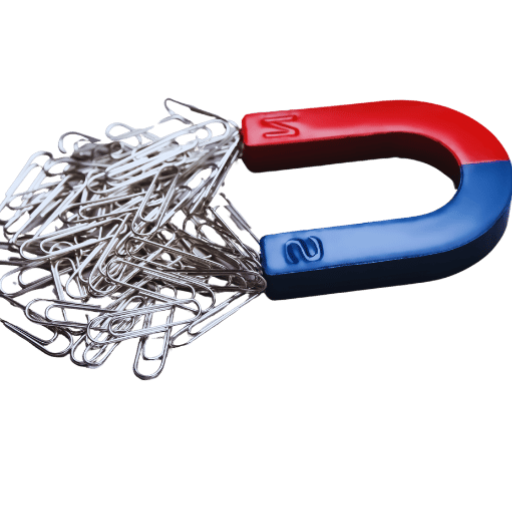
- Electrical and Electronic Components
Magnetic stainless steel finds wide use in transformers, solenoids, and relays. The permeability and controlled electrical conductivity of the material ensure maximum operating efficiency and reliability. For instance, application of grades 430 and 409 stainless steel in electromagnetic fields is excellent, with magnetic permeability easily attaining values beyond 200 µH/m.
- Automotive Industry
This material finds its way in manufacturing fuel injectors, sensors, and exhaust systems in automobile plants. The magnetic stainless steel maintains the operational efficiency of the instruments under rough circumstances due to its magnetic properties and corrosion resistance. For example, ferritic stainless steels are utilized extensively on account of being a low-cost option and excellent magnetic responsiveness.
- Medical Equipment
Magnetic stainless steels find applications in the making of interference shielding for Medical Resonance Imaging (MRI) and surgical instrumentation. The stainless steel, with its properties of minimal magnetic interference and biocompatibility, will endanger the sensitive instruments’ safety and accuracy. These stainless steels, especially 430F, are frequently employed in surgical instruments because of their machinability and controlled magnetic behavior.
- Home Appliances
Magnetic stainless steel can be utilized throughout domestic areas in the construction of washing machines, refrigerators, and dishwashers. Such material serves as a source of magnetic power and construction of attractive polish, hence balancing practicality and durability.
- Construction and Infrastructure
Placed within construction, magnetic stainless steel is often used for architectural frameworks, structural reinforcements, and fastening systems. Its strength, compounded with resistance to environmental challenges, ensures the longevity of any infrastructural endeavor.
- Industrial and Manufacturing Equipment
Use in the Construction Industry
Stainless steels have really modernized infrastructure design in the construction realm. From corrosion-resistant properties, through strength and durability, to even guarantee that these unusually extreme weather conditions are taken into view in a judicious purchase of structural elements, stainless steel is being used for beams, columns, and façades. Stainless steel, for instance, finds its primary application in the cladding of skyscrapers, where it is also aesthetically pleasing enough to give support to withstand high wind loads and attack from the environment.
Being stainless, it proceeds in reinforcing concrete constructions reckoned to resist chloride attack in marine or industrial situations. Researches reveal that the life of reinforced concrete construction can be greatly improved when stainless steel rebar is used by mitigating the stages of damage initiated by corrosion. On top of that, stainless steel can be recycled, which is highly superior to sustainable construction methodology to assist in constructing an eco-friendly infrastructure. Considering performance, life, and environment makes stainless steel a strategic material for the new generation of the construction industry.
Applications in Manufacturing and Machinery
- Food and Beverage Equipment
Stainless steel is extensively employed in the fabrication of food processing machinery, storage tanks, conveyor systems, and sanitary fittings. The repellence of bacteria over its surface guarantees the standards of sanitation and safety. For instance, type 304 stainless steel is used mainly because it has good resistance against corrosion and to food acids.
- Pharmaceutical and Medical Equipment
The instruments, medical and laboratory equipment for the facility of life, require the highest standards of biocompatibility and easy sterilization that only stainless steel can provide. Among them, 316 L has the best treatment against pitting and corrosion induced by saline solutions and bodily fluids.
- Chemical Processing Plants
Stainless steel constitutes integral parts of reactor vessels, heat exchangers, and pipelines in chemical industries where the aggressive chemicals serve as exposures. For example, duplex stainless steel 2205 offers the best resistance against stress corrosion cracking and is highly durable even under acid and chloride-laden conditions.
- Automotive Industry
Highway and motorway construction cases include exhaust systems, fuel tanks, and frame structures that require stainless steel for enhanced functional performance under highly stressful conditions. The data further reveal that ferritic stainless steels can cut vehicle weight by 15%, thus increasing fuel efficiency and reducing emissions.
- Aerospace Engineering
One misconception about stainless steels is that they are non-magnetic in all cases. Of course, some types of stainless steels are non-magnetic; many others, instead, do show magnetic properties. Austenitic steels can be magnetized to some extent, while ferritic and martensitic types are fully magnetic.
Common Misconceptions about Stainless Steel Magnetism

An inverse correlation exists regarding the tensile properties of cold deformation. In other words, an increase in cold deformation causes a decrease in tensile properties and austenitic stainless, such as steel 304 and 316 in kitchen utensils and medical appliances, are generally nonmagnetic with slight magnetic behavior under deformation or welding in some cases.
- Austenitic Stainless Steels
In general, these are nonmagnetic due to the crystalline structure. Steels of the 304 and 316 grades, which find their usual application in kitchenware and medical equipment, stand to the same plane. In certain cases, even a slight deformation or the heat of welding might cause a slight magnetic behavior of the metals.
- Ferritic Stainless Steels
Ferritic steels such as grade 430 are, of course, magnetic. Magnetic attraction occurs because the crystalline structure allows for it; hence, applications include automotive trims and appliances.
- Martensitic Stainless Steels
The martensitic grades, such as 410 and 420, are also magnetic. These are generally used to make knife blades and industrial tools that require much hardness and strength.
The relationship between steel composition, processing, and magnetism has to be exceptionally clear to ensure the correct material can be chosen for a specific application.
Addressing the Myth of Non-Magnetic Stainless Steel
This might sound unusual, but there is some form of magnetism in stainless steel after all. The magnetic properties of stainless steel develop in relation to its microstructure, which in turn depends on the chemical composition and associated manufacturing processes. Austenitic stainless steels are commonly referred to as “non-magnetic” varieties since the dominant structure, face-centered cubic (FCC) crystal, typically cannot act as a strong magnet. Yet, under changes brought by cold working or deformation, zones of the material can transform to either a martensitic or ferritic structure, thereby imparting partial magnetism to it.
With ferritic and martensitic stainless steels being magnetic due to their body-centered cubic (BCC) crystal structure, ferritic grades such as 430 are magnetic in their natural state; in contrast, martensitic ones gain in strength and hardness but retain magnetism. These distinctions are crucial if magnetism should hinder the work of devices, such as electronics or medical devices.
Let me further add that welding or exposure to extreme temperature changes could alter the magnetic properties of stainless steel. For example, heat treatment changes the microstructure, while such changes impact the permeability and ferromagnetic nature of the material. When such intricate details are understood, engineers and designers can make comprehensive choices meeting the performance and functional requirements of the design, work that assures the best use of stainless steel in various industries.
Identifying Magnetic vs. Non-Magnetic Stainless Steel
Stainless steels are broadly categorized into several families, each with distinct magnetic properties stemming from their crystal structure and composition. The two primary categories often discussed in this context are austenitic and ferritic/martensitic stainless steels.
Austenitic stainless steels, such as grades 304 and 316, are generally non-magnetic in their annealed state. This is due to their face-centered cubic (FCC) crystal structure, which does not support ferromagnetism. As an important note, however, cold working/deformation may induce a partial transformation into martensite that tends to be mildly magnetic; indeed, such materials must be considered when relying on the magnetic response of an austenitic material since these processing-induced variations affect the magnetism exhibited by the stainless steel.
Reference Sources
-
“Additive Manufacturing: A New Concept for End Users. The Case of Magnetic Materials”
- Key Findings: This study explores the development of austenitic stainless steels with increased nitrogen content, focusing on their magnetic properties. It highlights advancements in additive manufacturing techniques and their role in enhancing material properties.
- Read the paper
-
“Electroplastic Effect during Tension and Bending in Duplex Stainless Steel”
- Key Findings: This paper investigates the sensitivity of duplex stainless steel phases to external magnetic fields. It examines the Electric Pulse Effect (EPE) and its influence on the material’s behavior during tension and bending tests.
- Read the paper
-
“Austenitic Biomaterial Cracks Evaluation by Advanced Nondestructive Techniques”
- Key Findings: This research focuses on evaluating cracks in austenitic stainless steel using advanced nondestructive techniques, including magnetic field analysis. It emphasizes the importance of accurate crack detection to prevent material failure.
- Read the paper
Frequently Asked Questions (FAQs)
Q: What types of stainless steel are magnetic?
A: Magnetic stainless steels primarily include ferritic grades, which contain a higher amount of iron and may exhibit a weak magnetic pull. Common grades of stainless steel like grade 409 are known for their magnetic properties due to their ferrite content. On the other hand, austenitic stainless steels such as grade 304 or 316 are generally non-magnetic, as they have a higher nickel alloy content that inhibits magnetism. However, under certain conditions like cold rolling or thermal treatment, even austenitic stainless steels can become partially magnetic. It’s important to understand the different grades and their compositions when considering the magnetism of stainless steel.
Q: Is all stainless steel non-magnetic?
A: No, not all stainless steel is non-magnetic. While austenitic stainless steels, which include grades like 304 and 316, are typically non-magnetic due to their high nickel content, there are magnetic types of stainless steel as well. Ferritic stainless steels, such as grade 409, contain iron and exhibit magnetic properties. Additionally, some stainless steels can become somewhat magnetic if they undergo certain mechanical processes like deformation or thermal treatment. So, it’s essential to identify the specific type of stainless steel to determine its magnetic characteristics.
Q: How does stainless steel become magnetic?
A: Stainless steel can become magnetic primarily through mechanical processes or changes in its microstructure. For instance, austenitic stainless steels like grade 304 can become partially magnetic when they are cold rolled, which alters their crystal structure. Similarly, thermal treatments can induce changes that result in some ferromagnetic properties. The presence of ferrite in certain stainless steels also contributes to their magnetic characteristics, as ferrite has a weak magnetic pull. Understanding these processes is key to managing potential metal contamination in applications where magnetism is a concern.
Q: What is the advantage of stainless steel over regular steel in terms of magnetism?
A: The advantage of stainless steel over regular steel, particularly regarding magnetism, lies in its corrosion-resistant properties and versatility. While regular steel contains a higher amount of iron, making it more magnetic, stainless steel can be engineered to be non-magnetic, which is beneficial for various applications, especially in the food and marine industries. Non-magnetic stainless steels do not rust or corrode easily, making them ideal for environments where metal contamination needs to be minimized. Additionally, the ability to choose from different grades of stainless steel, such as the magnetic and non-magnetic types, allows for tailored solutions in design and functionality.
Q: What are the different grades of stainless steel and their magnetic properties?
A: Different grades of stainless steel possess varying magnetic properties due to their composition. Ferritic stainless steels, such as grade 409, contain a higher percentage of iron and exhibit magnetic behavior. In contrast, austenitic grades like 304 and 316 are primarily non-magnetic because of their nickel alloy content. However, it’s essential to note that some austenitic stainless steels can become somewhat magnetic under specific conditions, such as cold working. Understanding these differences helps engineers and manufacturers select the appropriate type of stainless steel for their applications, ensuring optimal performance in terms of both magnetism and corrosion resistance.

